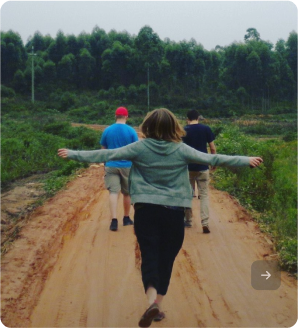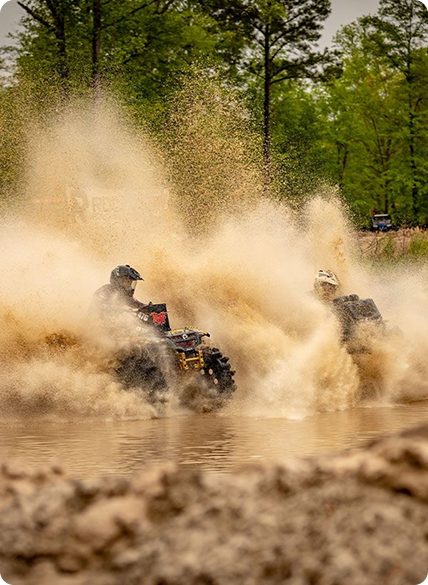Woodland RV’s
Epic Story
In the early days, Woodlands RV Park & Marina offered just 45 gravel sites, an outhouse, and the only man-made marina in Western Canada. What began as a weekend campground quickly evolved into a seasonal haven—shaped by hard work, shifting models, and a growing vision of what life by the river could be.
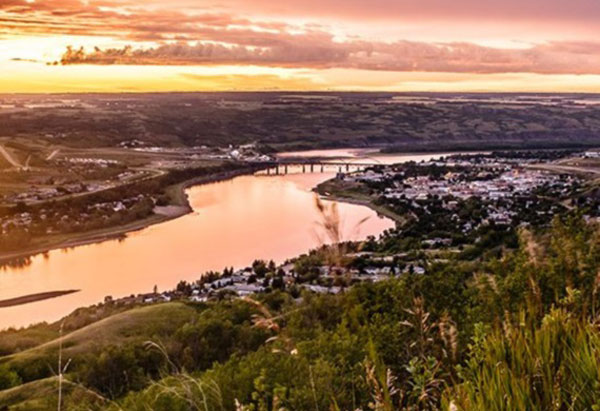
Table of Contents:
The Love of River Life
My love for rivers started in Peace River, Alberta, back in 1980. I was up there working—running a grader and building roads in the bush, spreading gravel across northern sites. That year, I had my first experience on the water: water skiing on the Peace River. I can still remember the feeling—cutting through the glassy surface of the river, the cool spray in the air, and the vastness of that landscape all around me. That was my introduction to boating, and it stuck with me.
But the real hook was what came after—killing the engine to pure silence. No roads. No people. Just river, sky, and eagles. That’s when I knew: rivers weren’t just places. They were a state of mind.
By 1986, life took an unexpected turn and I ended up downsizing my construction company. It gave me my first real summer off in years, and I packed up and headed to Osoyoos, BC—a sunny lakeside town known for water sports. That trip opened my eyes. I saw how people had built an entire way of life around the water: boating, camping, gathering. That seed planted itself deep.
Not long after, I bought my first river boat – an almost new 1986 Marathon – and, started exploring. I boated many rivers across Alberta, but no river ever quite measured up to the Peace. It wasn’t just the landscape or the water—it was the camaraderie. There was a buddy system out there. Everyone looked out for one another. That sense of connection stuck with me and shaped what I would later try to build.
In 1991 we moved to Westlock. While I never stopped boating, something was missing. I could feel it. Westlock didn’t offer that same river connection, and I knew in my gut that one day, I’d return to living on the water. That desire never left me—it simply waited for the right moment to come back to life.

Setting My Eyes on the Athabasca
In 1997, I hired a consultant by the name of Tom Lawton who lived in the Fort and I told him I was looking for a place around the river and that if he heard anything to let me know. I wanted a place along the river, and the Athabasca made sense. I boated on it a few times and I enjoyed it.
On February 15th, 2002, Tom called me and told me there was a piece of property I should look at out here. I drove from Rocky Mountain House to Fort Assiniboine that morning, it was 30 below and 3 feet of snow on the ground. I walked into the property on the river, and said wow, I like this and then the property up on the hill and looked at the river valley, and said wow I like this. I got in my truck and called Sunny Side Realty and spoke with Charley Parsons and told him I wanted to buy it.
I didn’t have a plan. I didn’t know what I was going to do with it. But possession is nine-tenths of the law, and I knew if I had the land, I’d figure it out.
The land’s history only deepened my interest. In 1898, a man named John F. Green staked his homestead there. He came seeking gold, but found peace in farming and the river instead. With no heirs, he willed the land to the University of Alberta in 1906, writing, “Let it teach.”
For decades, the university held the land, shaping the surrounding community in the process. That’s why Fort Assiniboine has streets named University Avenue and State Avenue to this day. In 2001, needing funds for the Mazankowski Heart Centre, the university sold off its remaining outlying properties.
Two raw parcels remained—untouched stretches of river, bush, and history.
Still, I couldn’t shake the feeling that this piece of land might become something more than just a place to park a boat or watch the river roll by. I kept circling back to something I’d heard years earlier in a conversation with Gerry Ryan at Wilmac Equipment. We were talking business, and he said, “Only thing that’s recession-proof out here is a campground. People will always go camping.” The seed had been planted back then—and now, it would have ground to grow in.
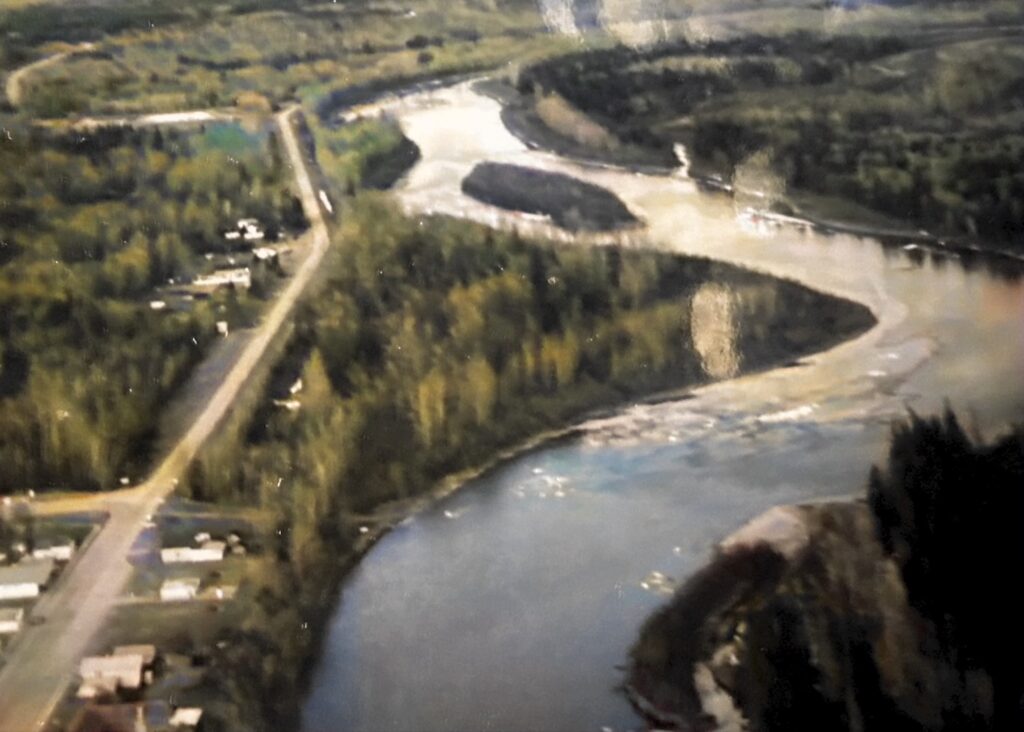
The Land and the Dream
In March 2002, after purchasing the land that would become Woodlands RV Park & Marina, I stood on it for the first time holding a copy of the original 1906 land title. According to that old record, the property stretched just 6.3 acres to the river’s edge. But something didn’t add up. The space felt bigger—the distances longer, the landscape more expansive than the numbers suggested. I’d seen enough land in my life to trust my gut, so I brought in Universal Surveys to get the truth.
I took aerial photos, had Universal survey the perimeter, and when they handed me the updated report, I nearly fell over: 18.4 acres. Nearly three times larger than the original title claimed. I let out a laugh—part disbelief, part joy. That discovery changed everything. In an instant, the scope of my dream exploded. More land meant more possibilities, more freedom to imagine. I wasn’t limited to a cramped layout of a dozen RV sites and a tiny boat launch squeezed into 6 acres. No – with over 18 acres, I could spread my wings. And then my eyes turned to the river. The extra stretch of shoreline opened up an entirely new idea—something bolder than anything I’d considered before. The land extended further along the Athabasca River than I’d realized, including a low, marshy hollow at the water’s edge. On the old title map it was just a swampy little puddle by the river – hardly worth noticing – but now I understood its potential. Standing there in the squelchy mud, I found myself imagining a safe harbor carved out from the riverbank. Could I really do that? I wondered, heart pounding. It would be ambitious – as far as I knew, no one had ever built a full marina on this river. (In fact, I would later learn Woodlands would become the first man-made riverboat marina in all of Western Canada – though back in 2002 I wasn’t chasing any records, just my own vision.) Those days, I could hardly sleep—eager and overwhelmed in the best way. I took the aerial photographs, printed them in large format, and spread them across my dining room table. I smoothed them flat, pinned the corners down, then grabbed a pencil, a ruler, and a big eraser—my tools to bring the dream into focus. First came the campground road: a winding path through the trees. Then the RV sites—simple rectangles spaced generously, each tucked into its own little clearing. Eventually, we’d have around 60 sites (54 seasonal sites), but in those first sketches, I was simply following instinct.Then I turned to the boldest part of the vision: the marina. I shaded in an inlet along the river’s curve and drew a narrow channel connecting it to the main flow. I pictured docks, moored boats, a calm basin sheltered from the current. With the extra land, there’d be space for more than just a launch—maybe parking, picnic areas, even future cabins.
In that founding moment of 2002, under the Alberta night sky, I knew I was stepping across the threshold—from dreaming into doing.
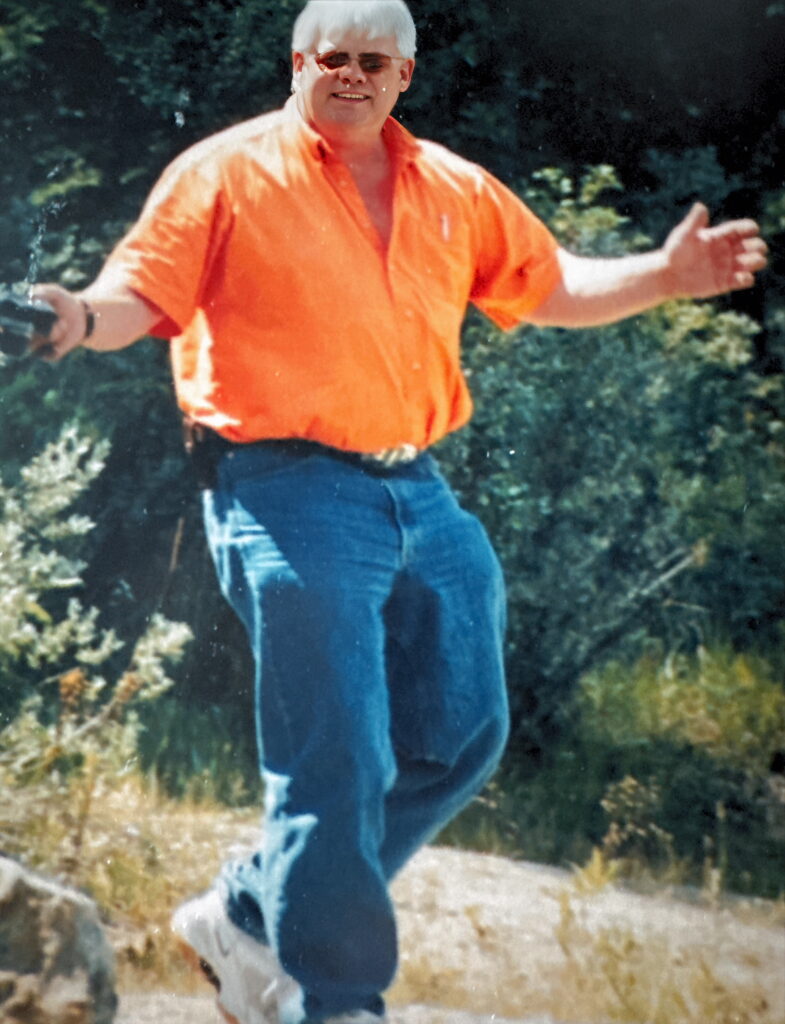
Setbacks, Sweat, and Small Miracles
Once the vision was in place the real test began: getting the approvals.
For 18 months, I followed each letter through 11 different offices. Alberta Environment, Woodlands County, Public Lands, Health & Safety, Forestry and Oceans & Fisheries—every agency had its own process, and the fact that the land sat near the river made it even more complex.
I stayed with it. I knew what this project could bring to Fort Assiniboine. I invested in the studies. I adjusted the plans. I answered every question they threw at me. It was slow, frustrating, and expensive—but it mattered.
In 2004, the final approvals came through. The permits were signed. It felt like a dam finally broke, and the water could flow.
We were ready to build.
From Bush to Woodlands RV Park & Marina
Once the approvals came in, I didn’t waste time. I began clearing trails by hand, flagging out campsites, and roughing in roads with my own equipment.
No crews, no contractors—just me, my boys, and the machines I trusted. The first shovel in the ground felt like a long exhale. I could finally start shaping what I’d carried in my head for years.
Phase 1: Taming the Wild (2004-2005)
- We brushed the marina site and dug the marina in in August of 2004. We ended up with approximately 18,000 meters of silt, which I used to build the berms. 18,000 meters of gravel was also taken out of the marina and that was stored on site.
- Continued with dirt work in the fall and the following spring we started building the berms.
In the spring of 2005 I brought in a crusher and crushed everything 4 inch and under saving the oversized rock for armor rock.
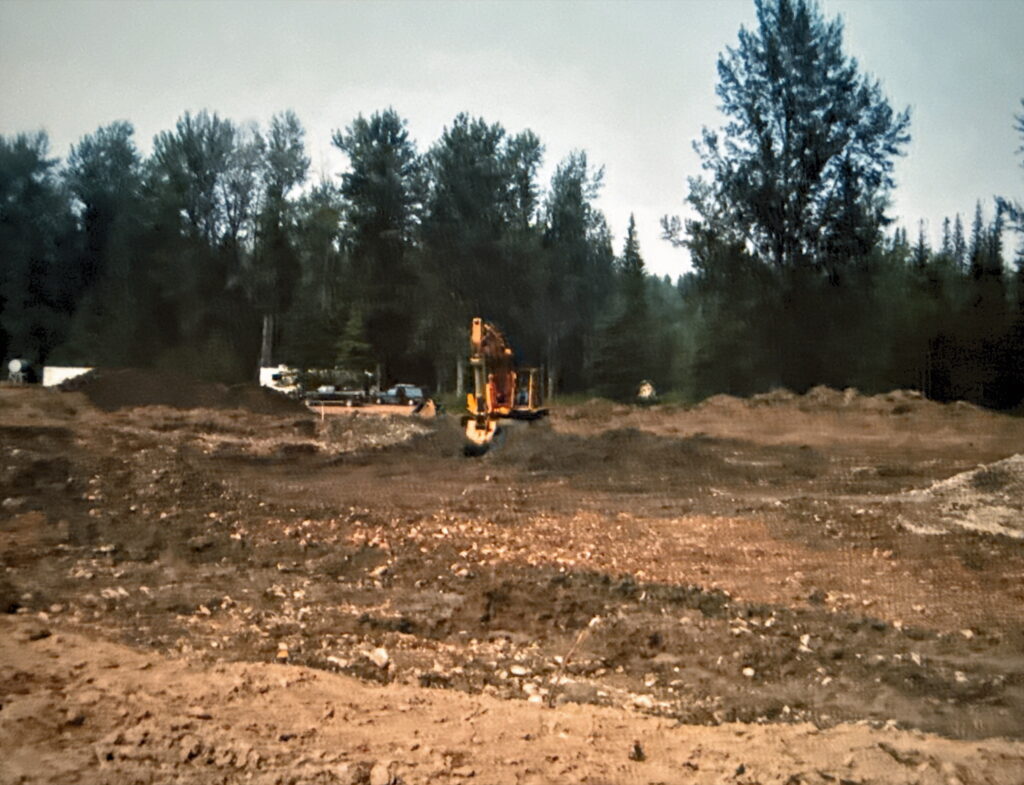
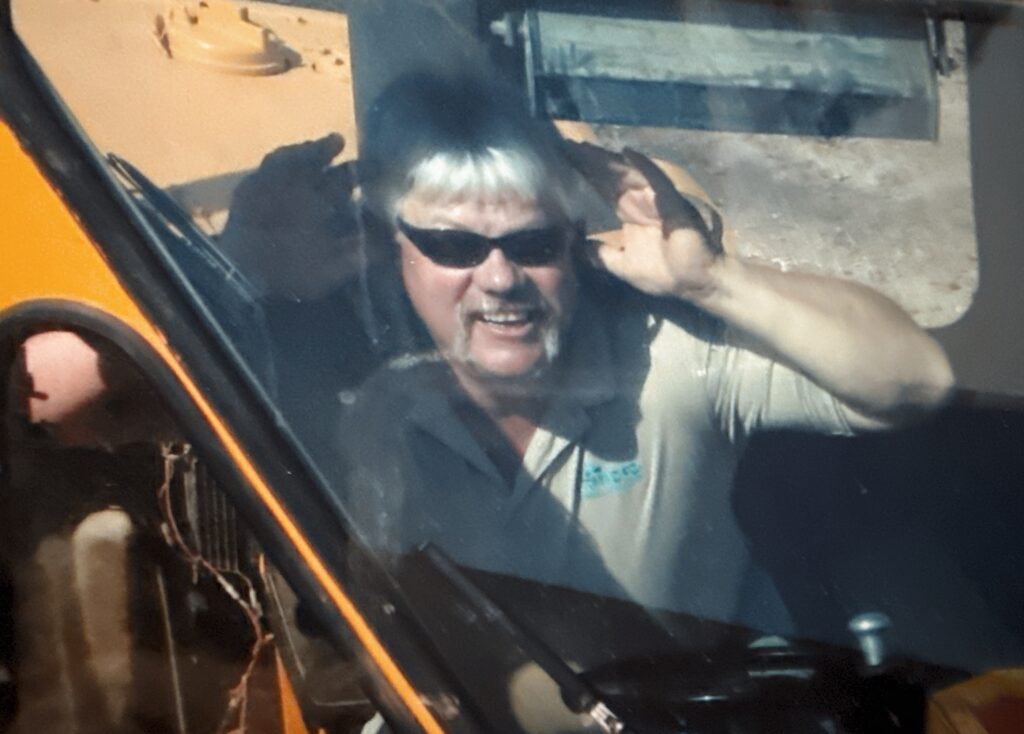
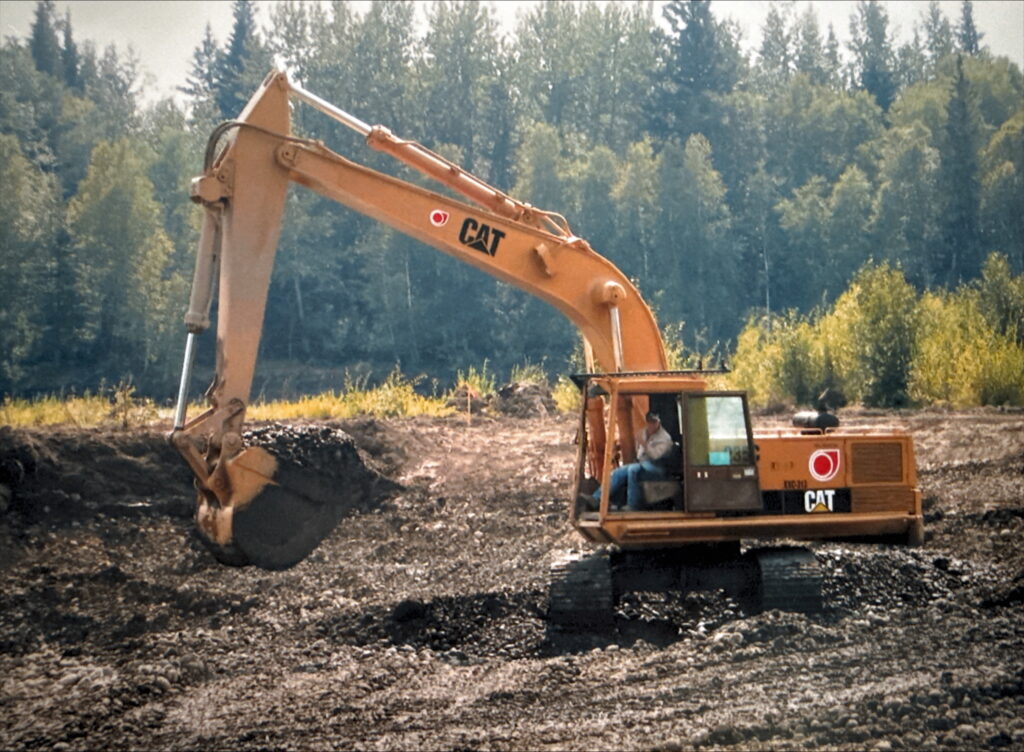
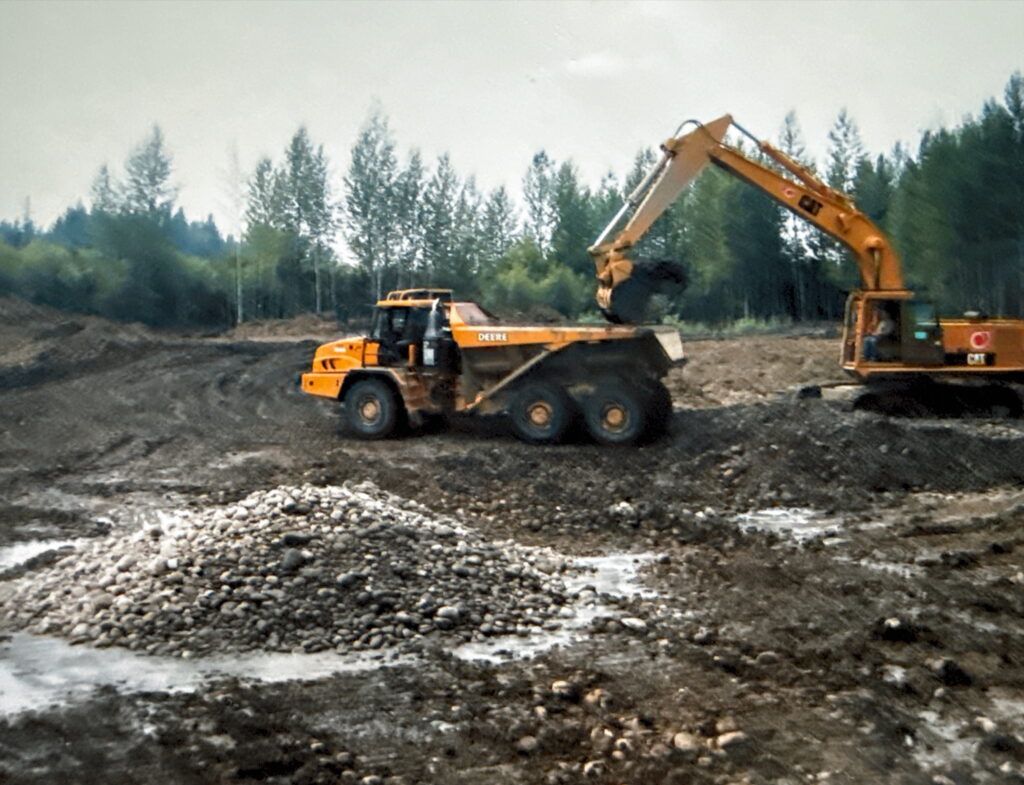
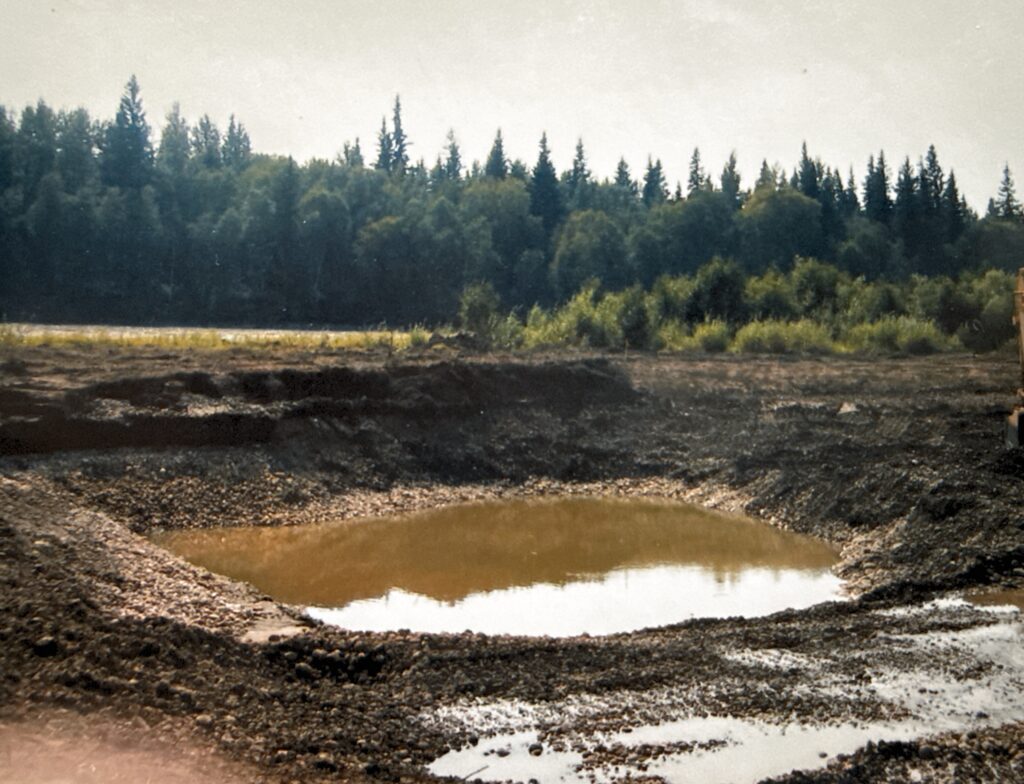
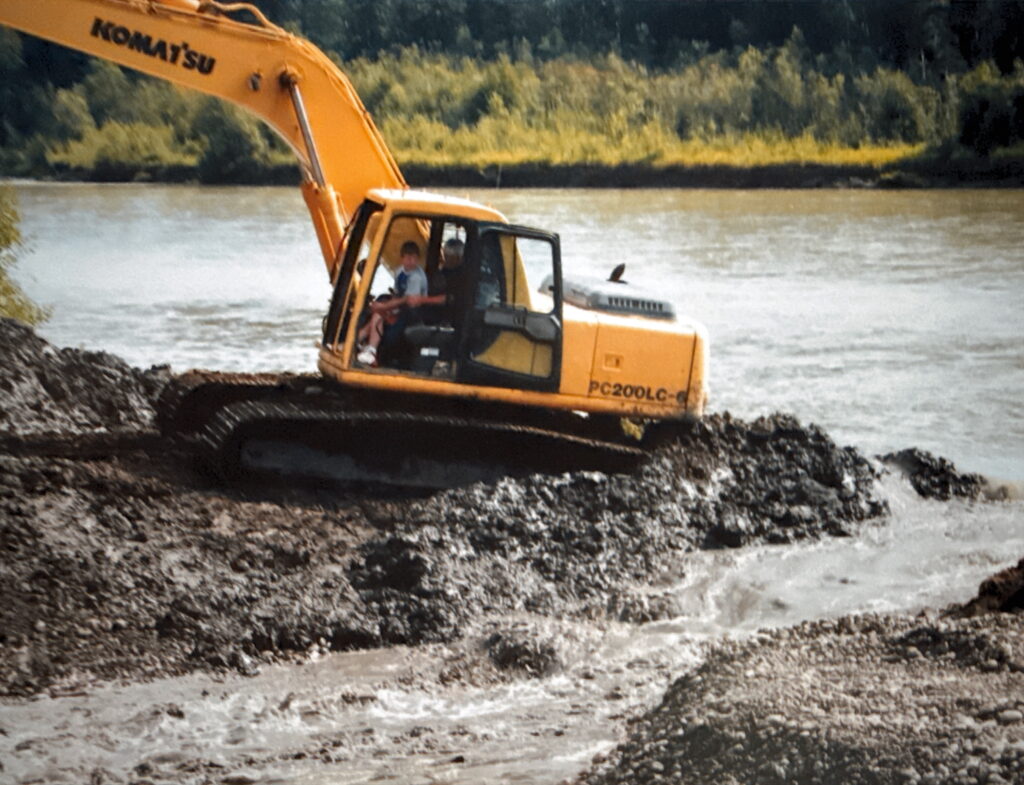
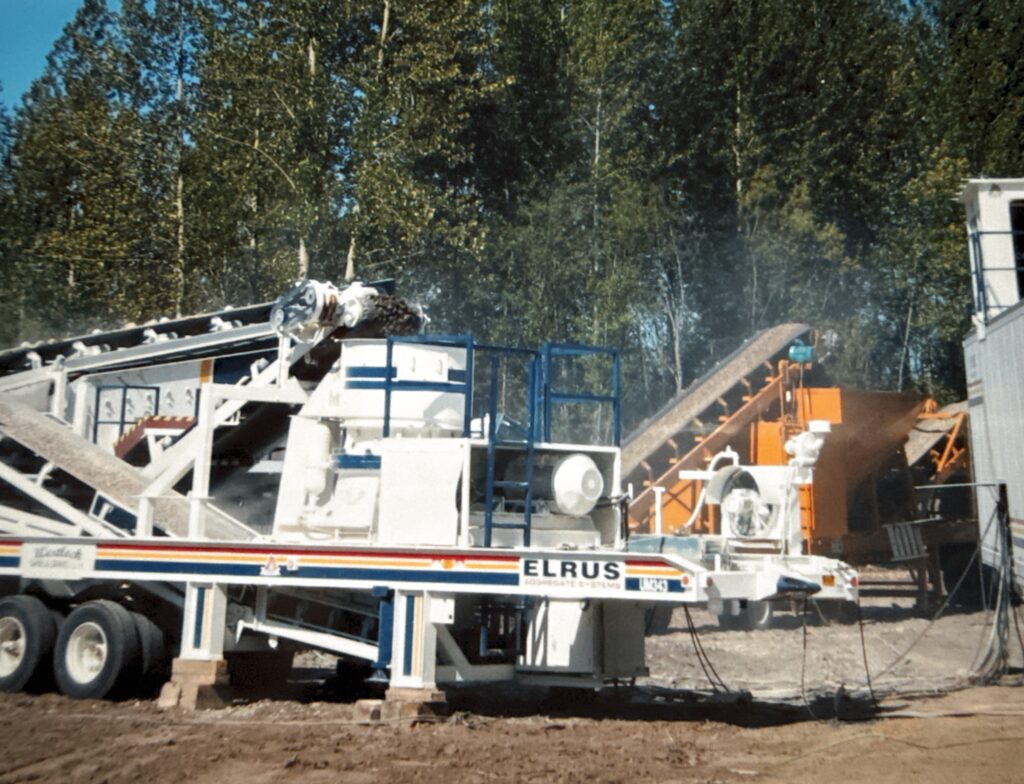
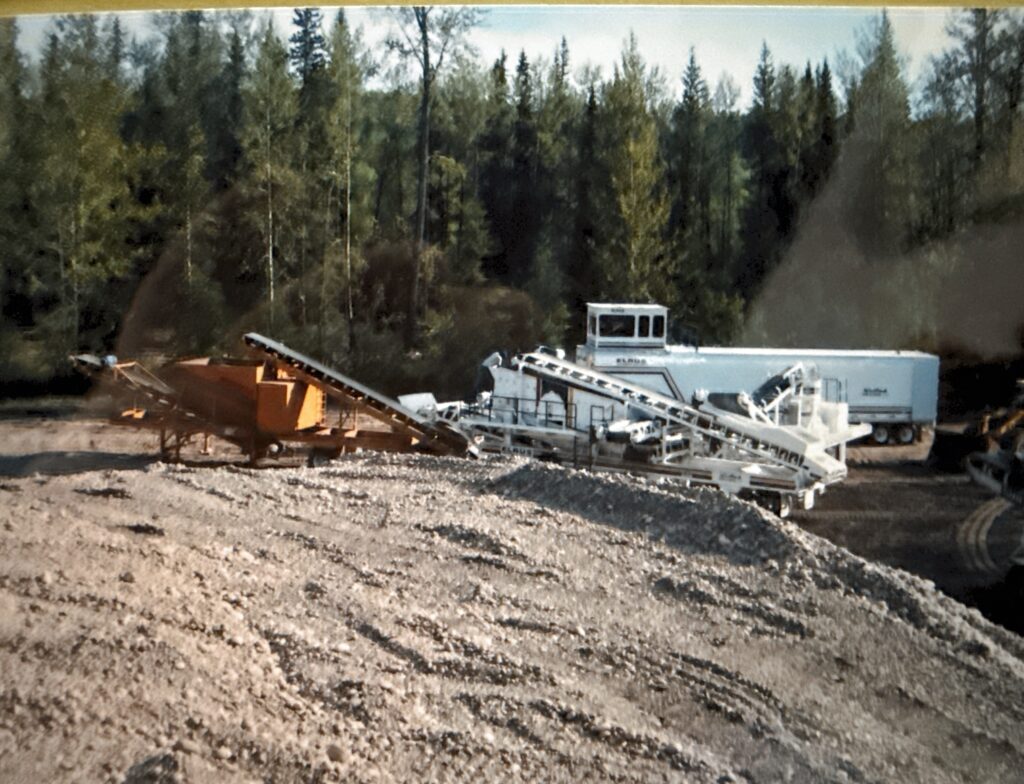
Phase 2: Bones of Community (2006-2008)
Installed power, water and sewer to all of the sites and built buildings and main office.
We were able to hook up to the town water and sewer, which made it an awesome thing to have.
The first 45 RV pads carved into the area. Made the camground ready for opening in May of 2008.
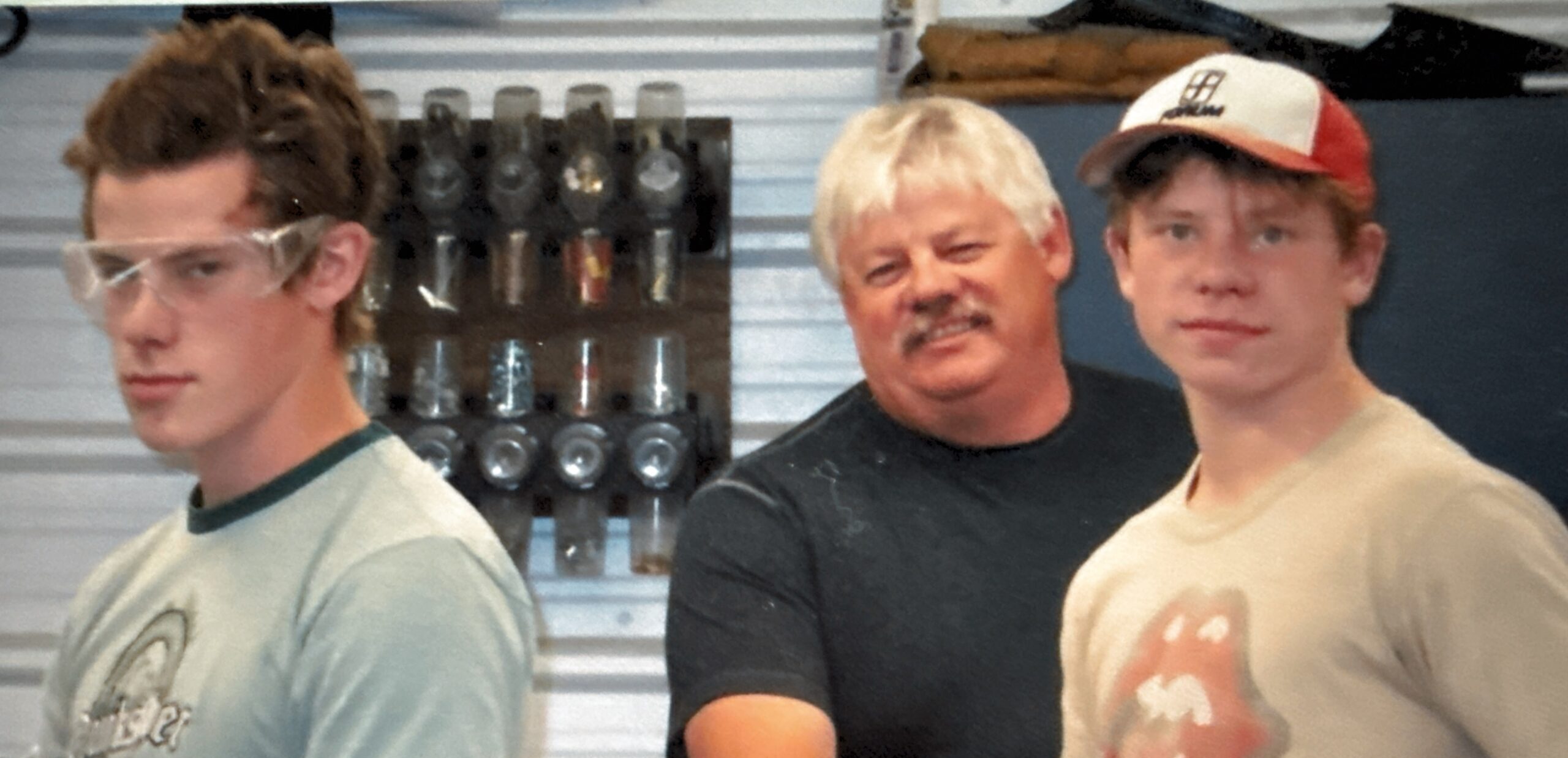
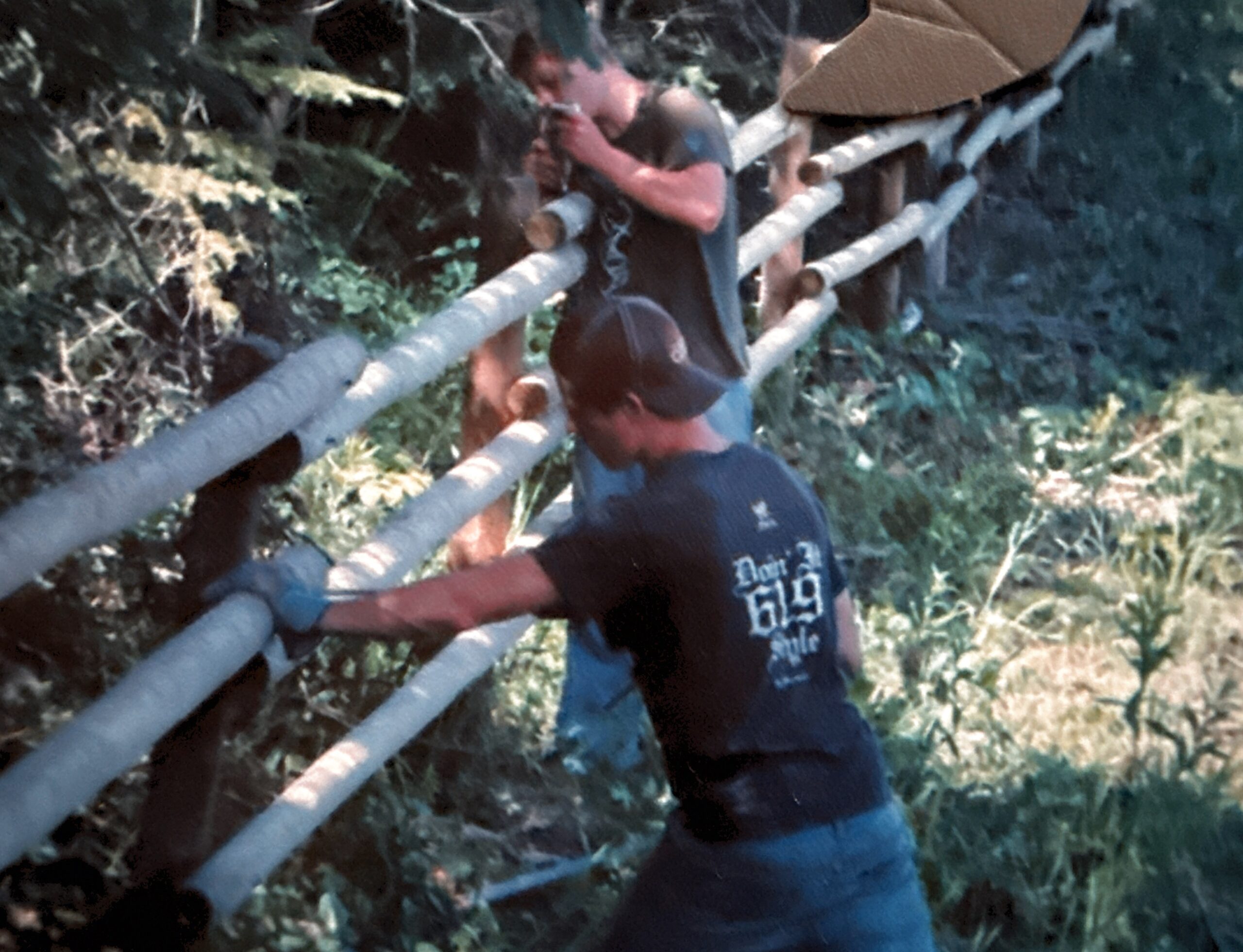
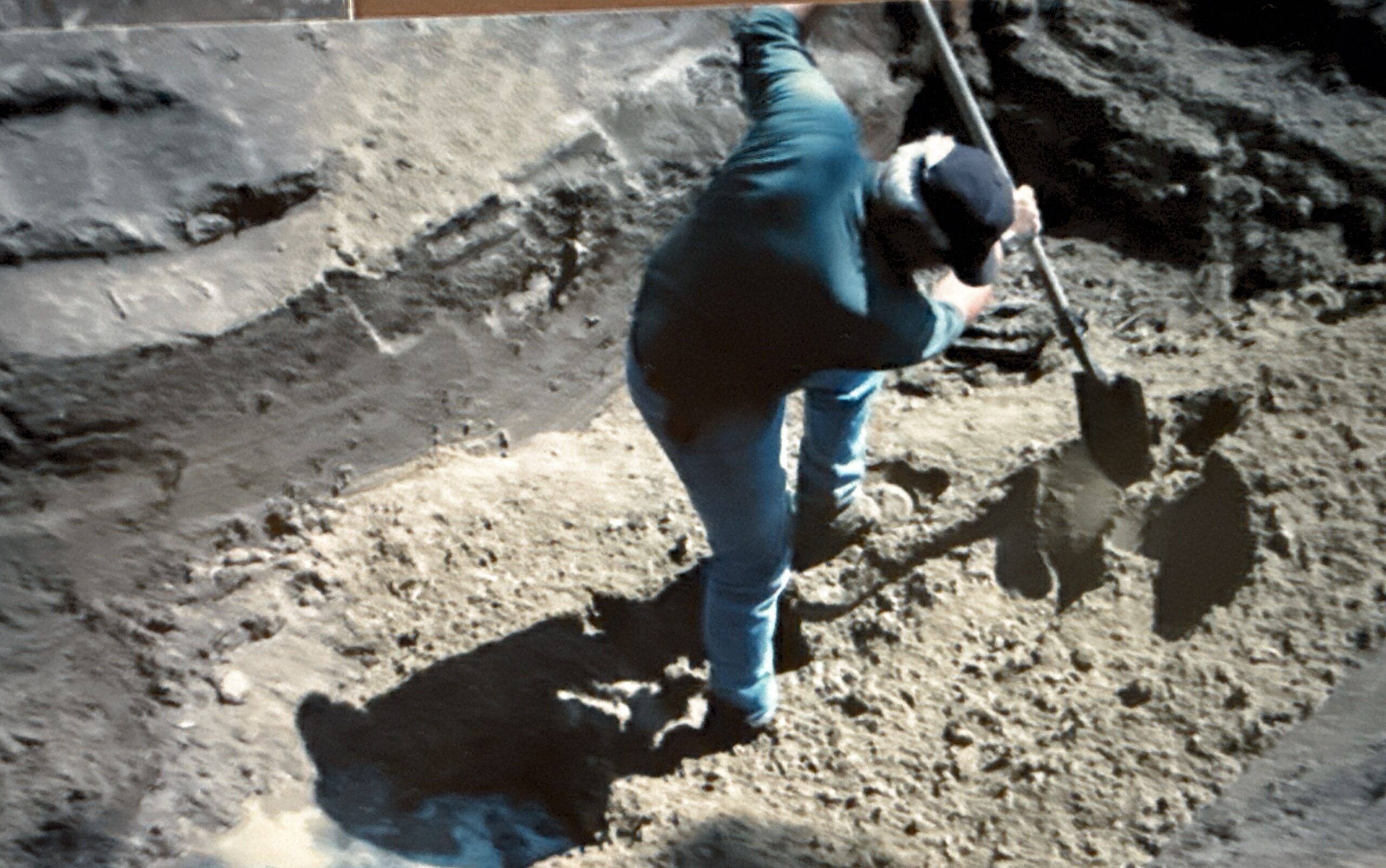
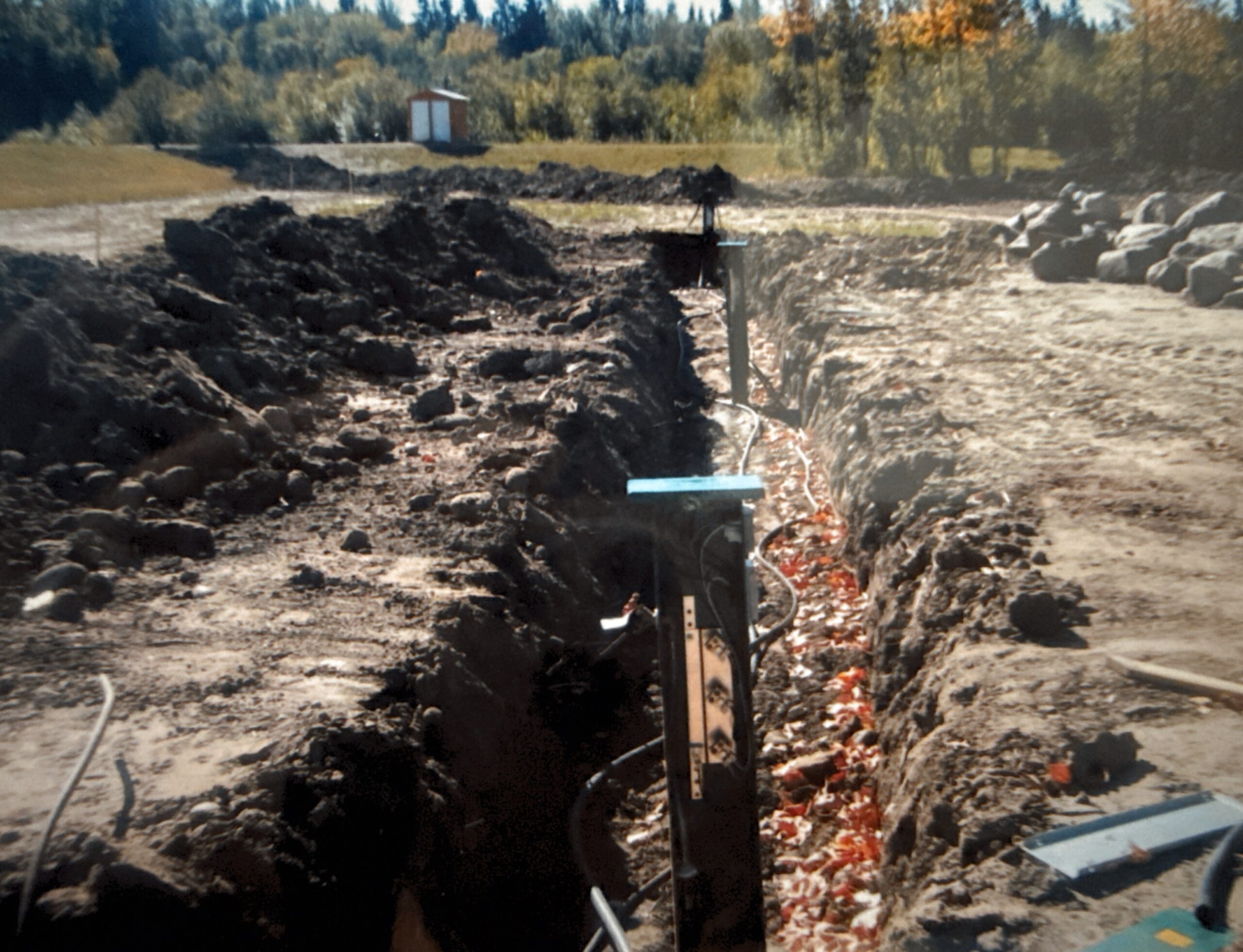
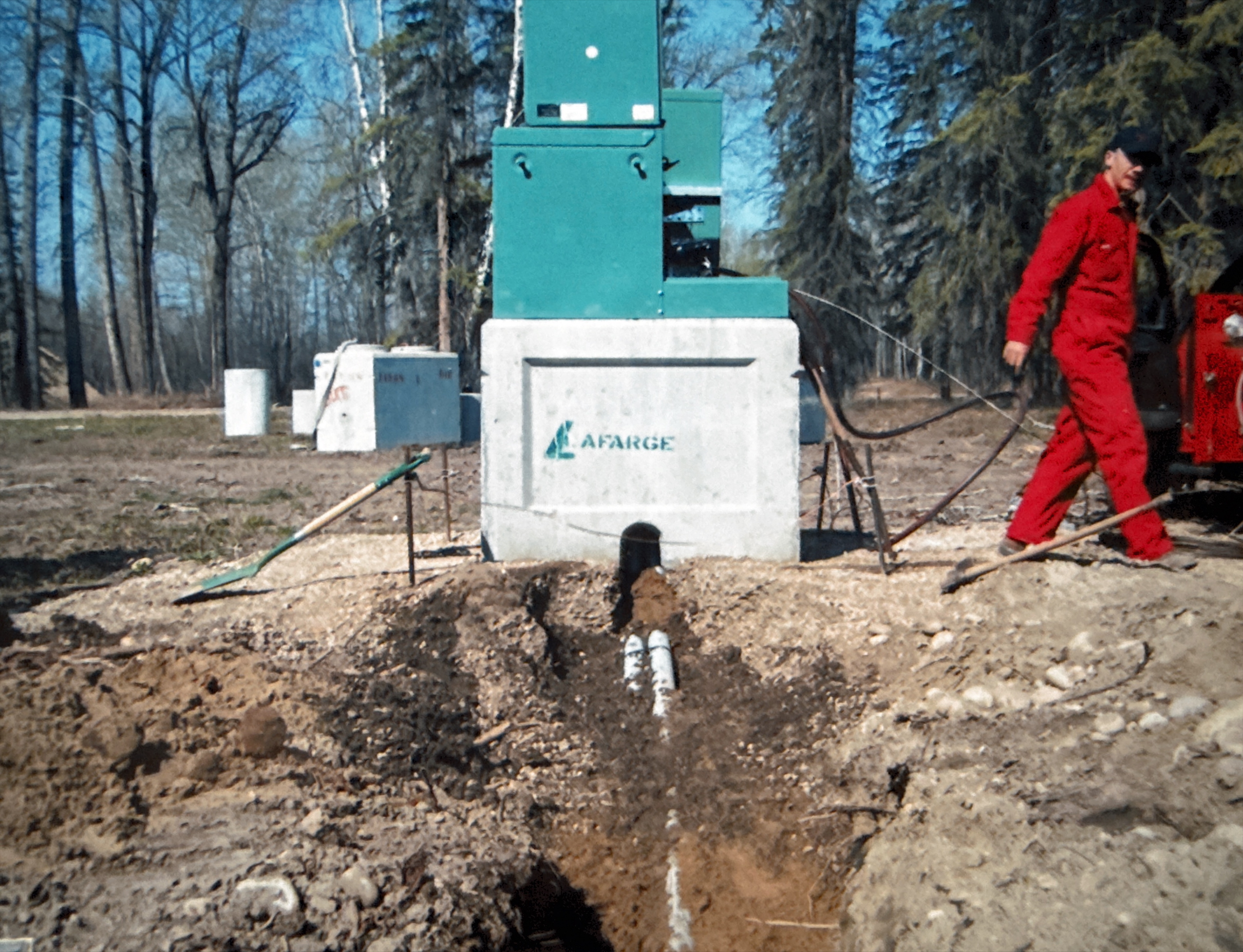
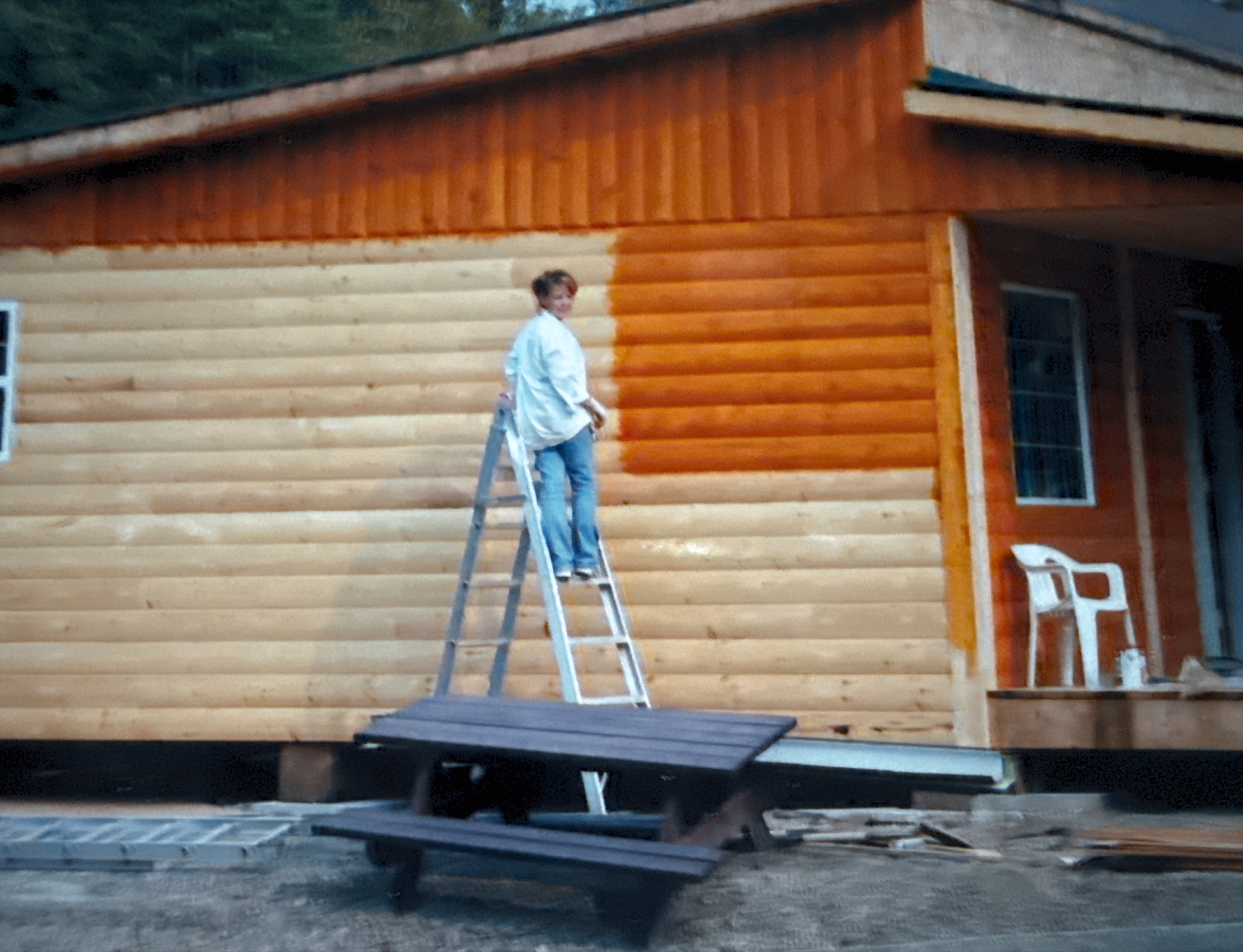
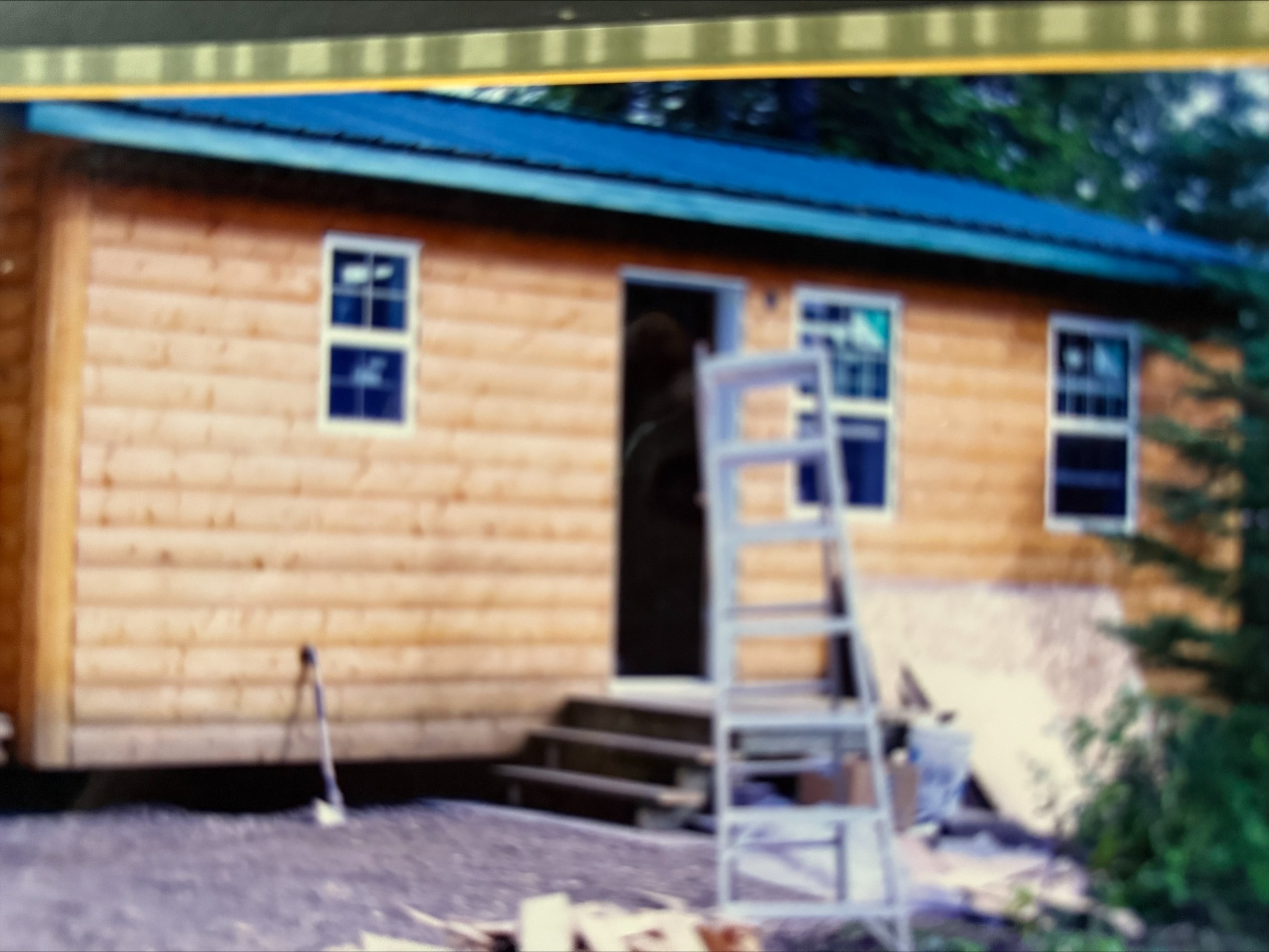
Phase 3: Heartbeat (2008-Present)
What began as 45 gravel pads and a hand-built marina slowly grew into something deeper: a place with heart.
We listened to our guests.
Over time, we transitioned from weekend stays to seasonal sites. We expanded to 60 sites (54 seasonal) and built a rhythm with our campers—many of whom came back year after year. We added a covered picnic shelter and a gazebo where neighbours could gather for morning coffee or evening card games. A playground soon followed, tucked under the trees, where kids could run free while parents relaxed nearby. We built a pickleball court that quickly became a hub of friendly competition and laughter.
Over the years, Woodlands grew not just in size but in spirit. We hosted weekend BBQs, community potlucks, and riverfront events that brought people together. We improved trails, upgraded power hookups, and added touches that turned function into comfort—because we knew this was becoming more than just a place to camp.
Today, Woodlands isn’t just a campground—it’s a community by the river. A place where stories are shared around fire pits, kids ride bikes until dark, and boats glide in and out of a marina carved by hand and vision.
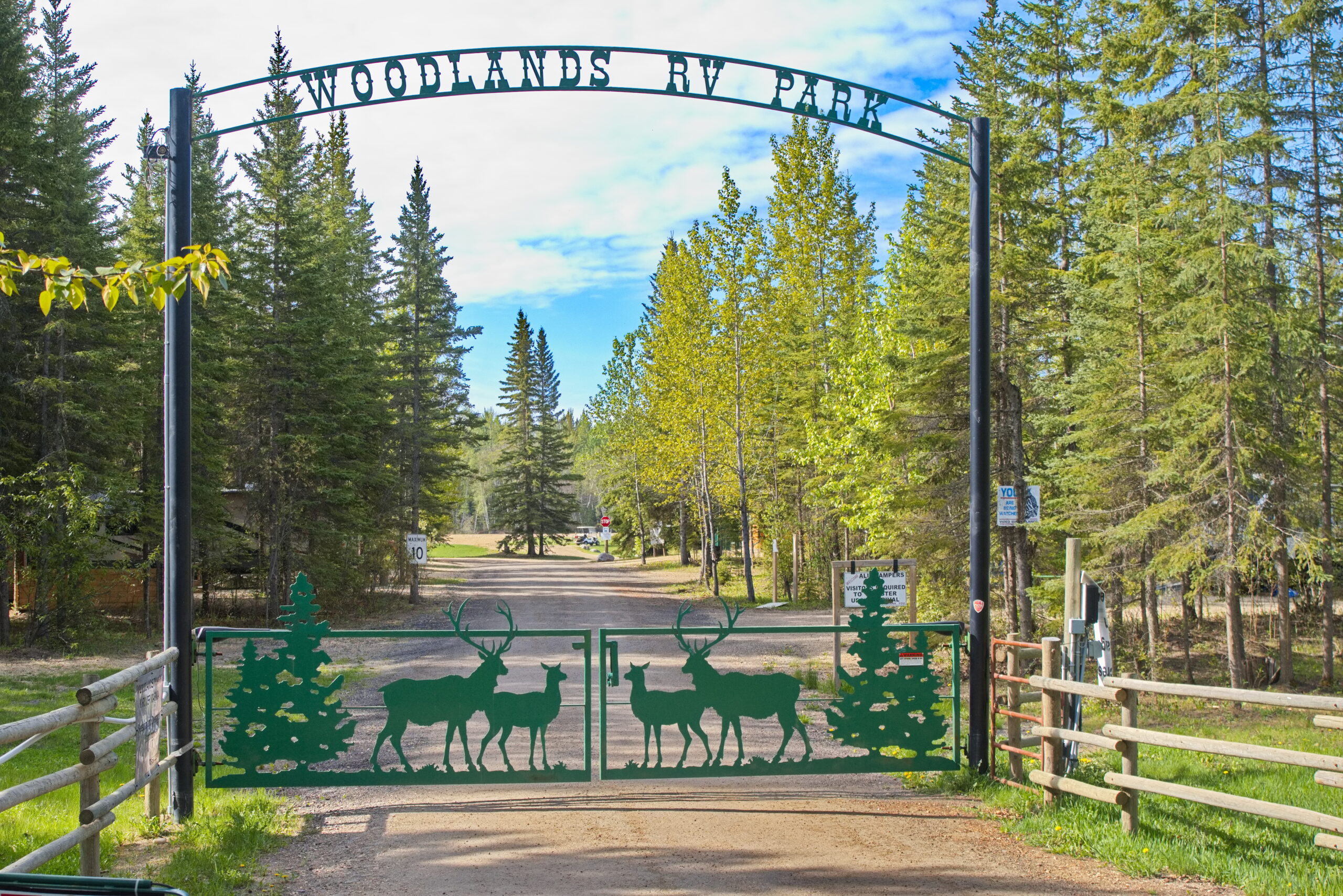
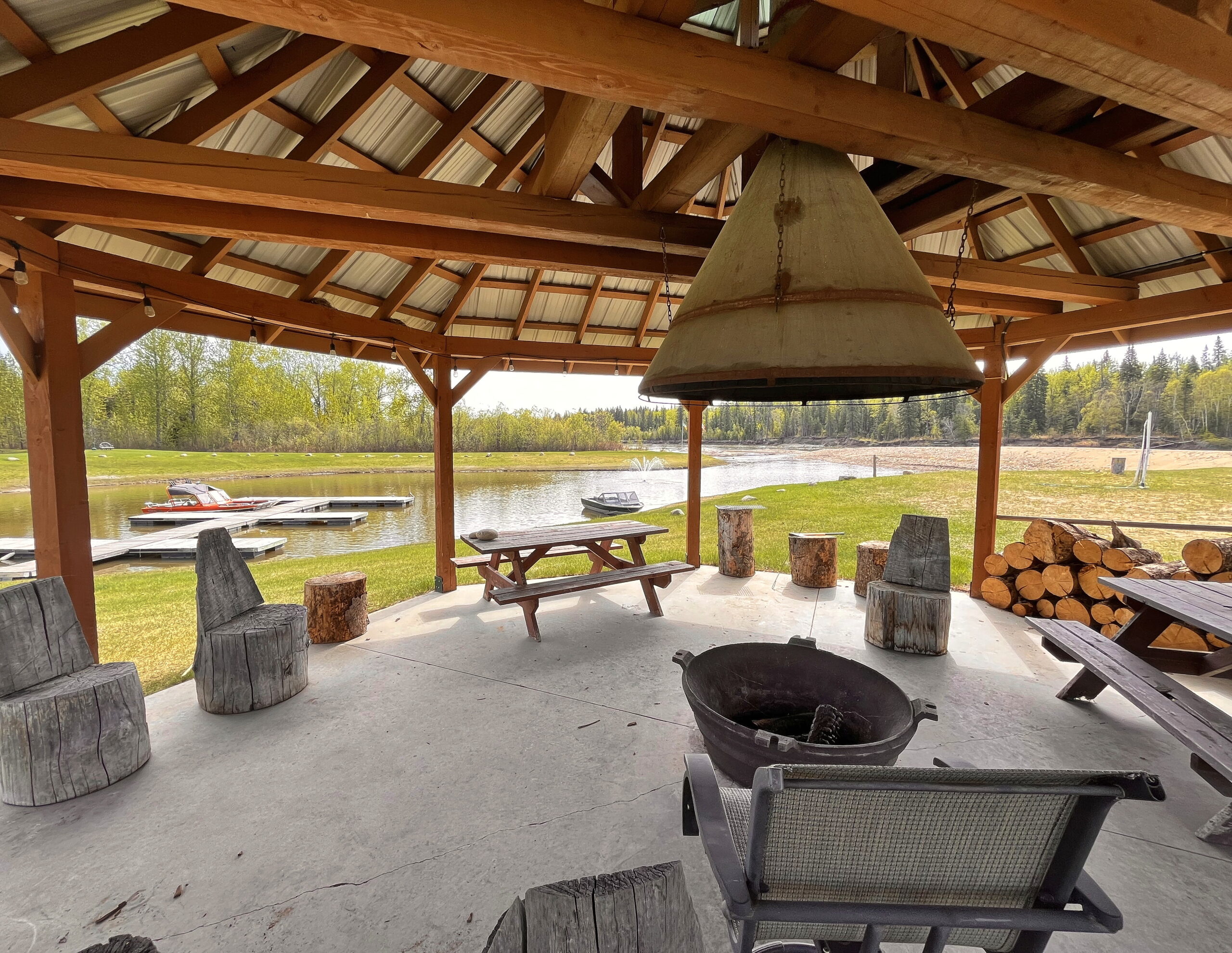
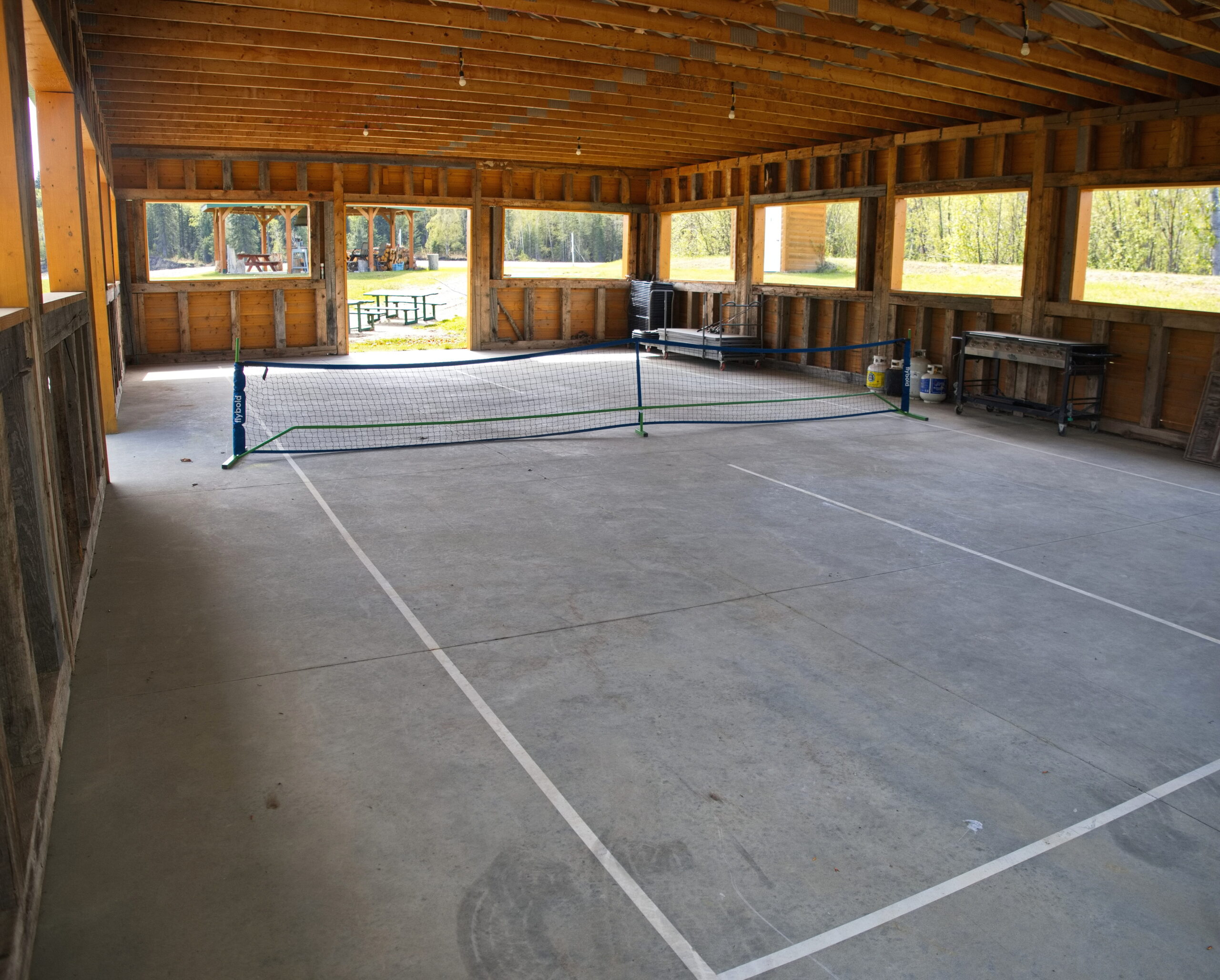
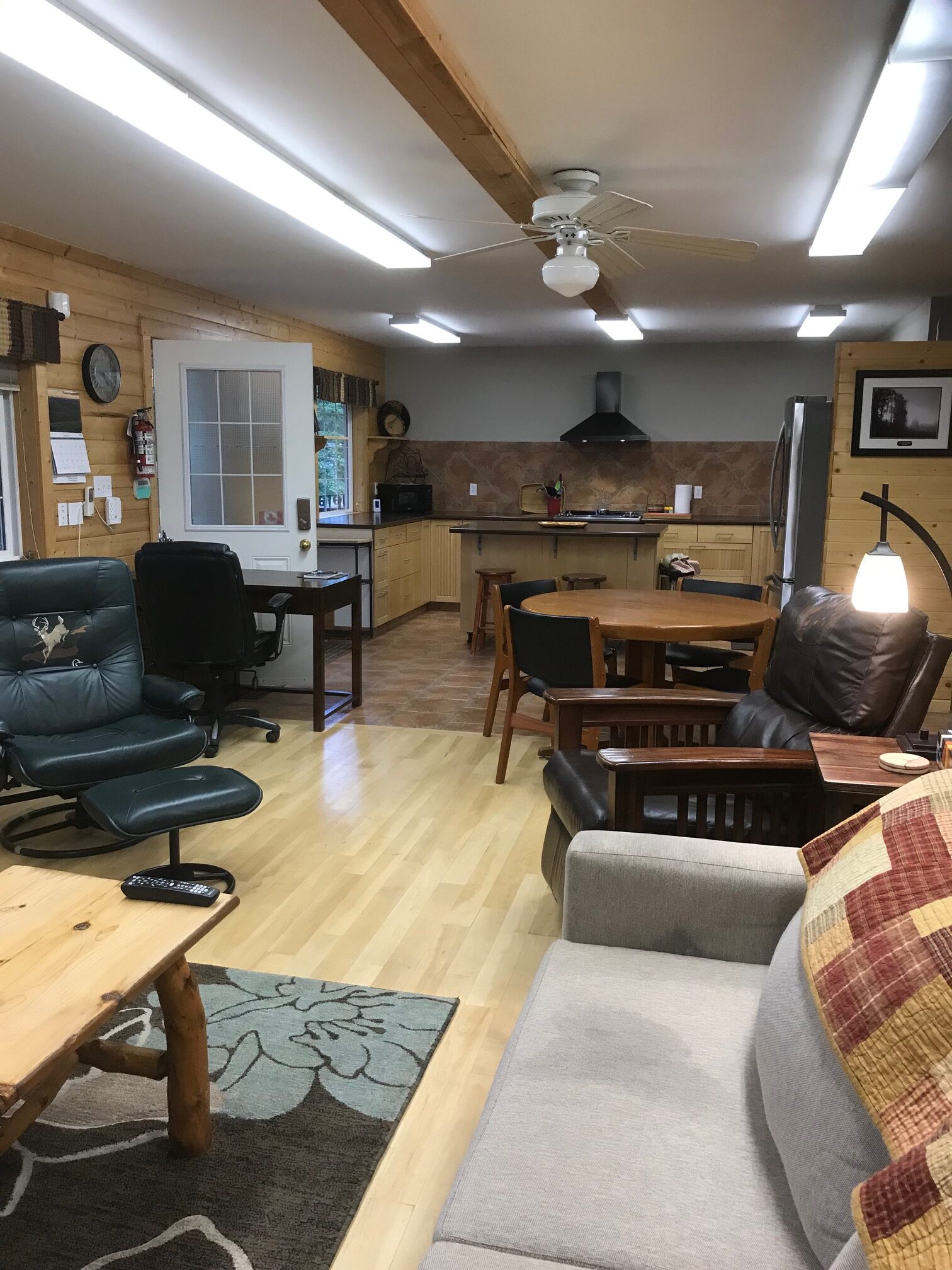
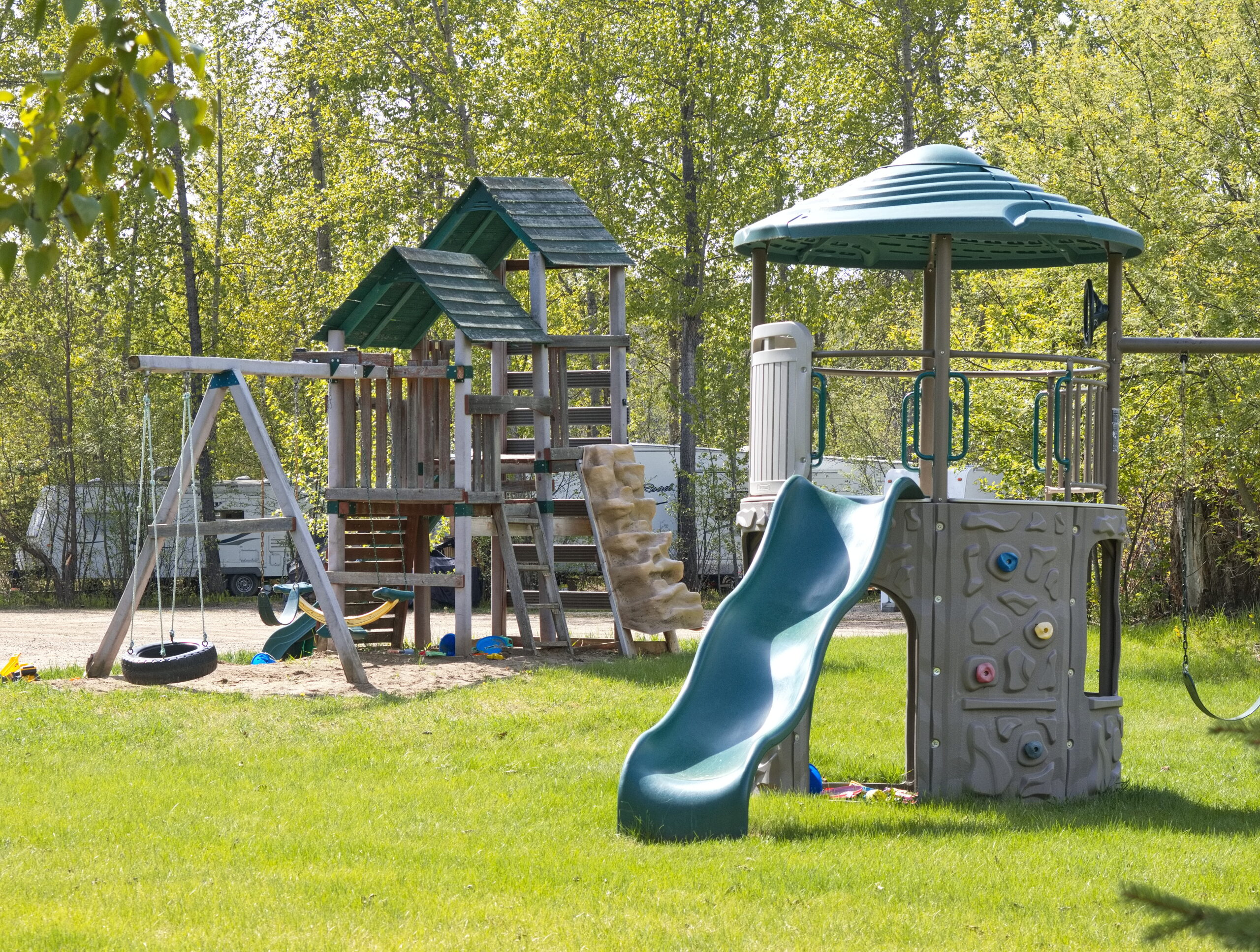
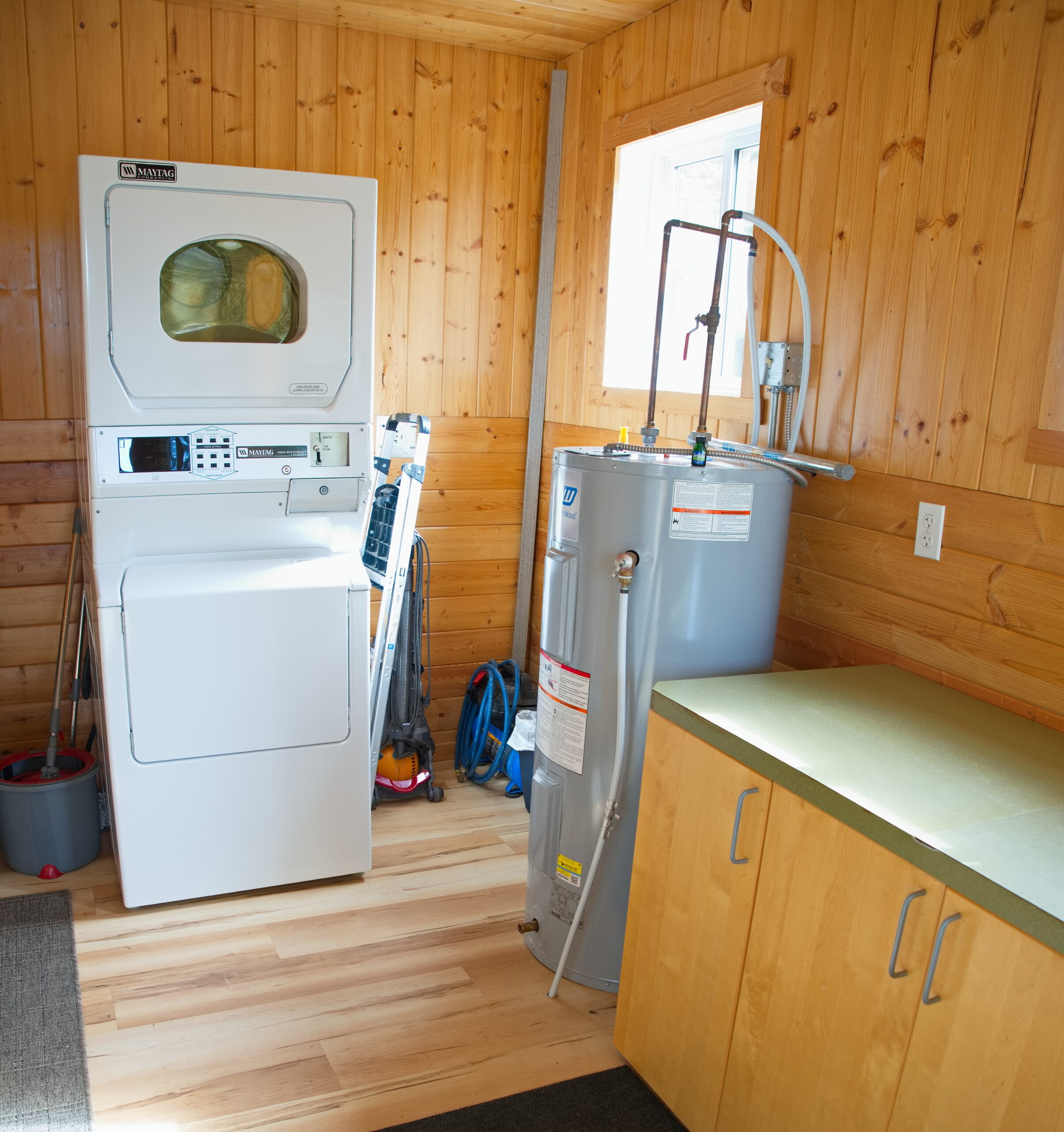
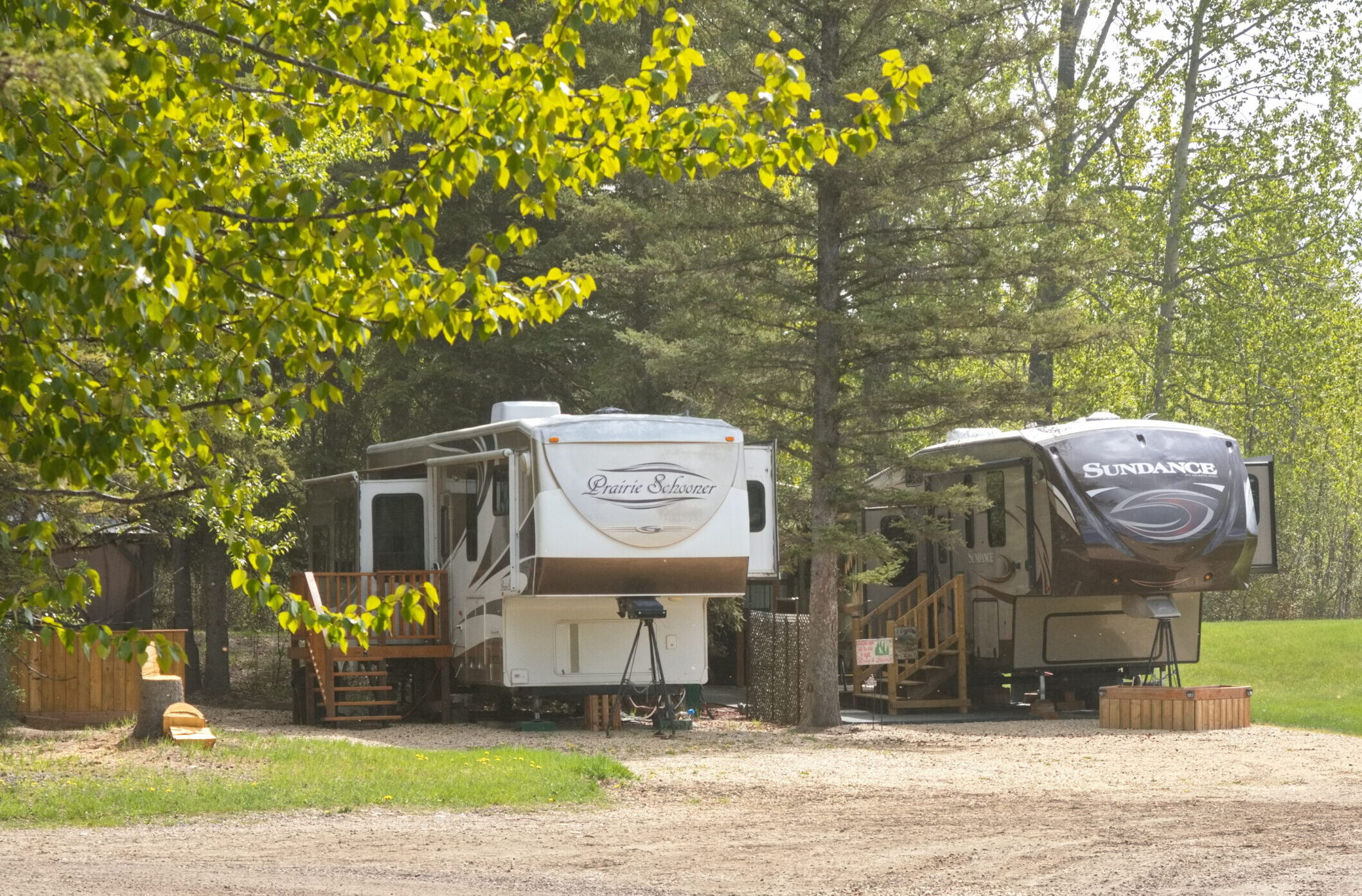
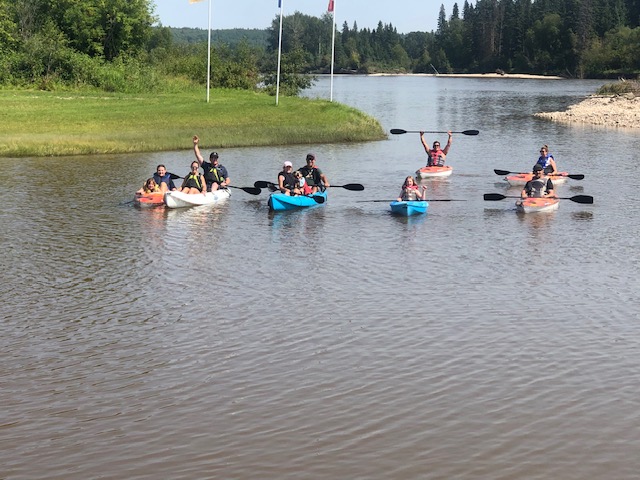
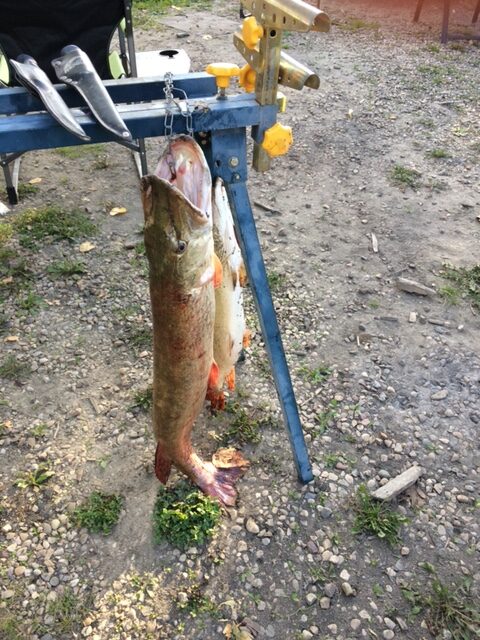
Woodlands RV Park opened in May 2008
We had 45 gravel pads, an outhouse, and what turned out to be the only marina for many kilometers in any direction. At the time, there were no comparable marina-equipped campgrounds along the Athabasca River—at least not within a 150-kilometre radius. Fort Assiniboine’s remote setting made the development even more unique. Most nearby campgrounds were simple forested pull-ins, with no formal docking or long-term infrastructure.
We started out as a weekend campground, opening mainly for short stays and summer escapes. But the turnover was relentless—cleaning, managing bookings, keeping things orderly—and the workload didn’t match the revenue. Over time, we realized the real value was in building a community, not just a campsite. So we pivoted: fewer weekenders, more long-term campers.
Eventually, we expanded to 60 sites (54 seasonal). That shift gave the campground stability, and it gave our guests a place they could truly settle into. It wasn’t just a weekend stop anymore. It became a seasonal home on the river.
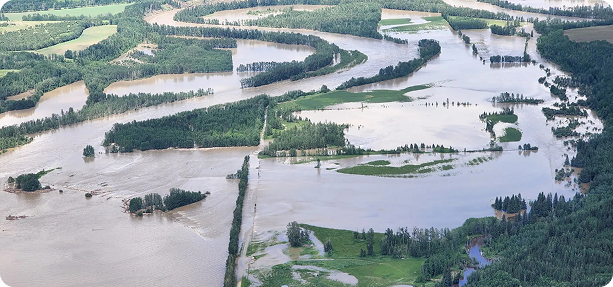
River Lessons
Living on the river means learning from it.
After years of watching the Athabasca, I began tracking Alberta Environment’s flow monitoring data. They have five key measuring points upstream. I added them together, and within eight hours, I could predict how much water would pass beneath the Fort Assiniboine bridge. It became part of my rhythm—understanding the flows, reading the river like a second language.
We’ve seen four major floods since Woodlands began.
The first came on June 6, 2011. The water rose quickly and began hydrolicking behind the berm. We held the river back with pumps, barely keeping it out.
Then, just a month later—July 7th—came the second flood. We were still recovering from the first when the second surge hit harder. This time, the pumping couldn’t keep up. Water pushed through and damaged 35 campsites. It was a gut punch.
The third flood came in 2020. But by then, I’d learned the system. I tracked the readings, watched the flow hit 3,400 cubic metres per second. We were ready. The berms held, the pumps kicked in, and the campground stayed dry. For the first time, we were ahead of the river.
Then came 2023.
That spring, wildfires burned over 3 million hectares south of Edson and Hinton. When the rains finally came in mid-June, the forest couldn’t hold it. The runoff surged north. The river rose faster than we’d ever seen. At its peak, over 4,700 cubic metres per second roared under the Fort Assiniboine bridge.
This time, nothing held. Woodlands RV Park & Marina went fully under. Every site was flooded. Damage was extensive.
But we’re still here.
Because when you build your life beside a river, you accept its terms. The floods will come. What matters is how you rise after the water recedes.
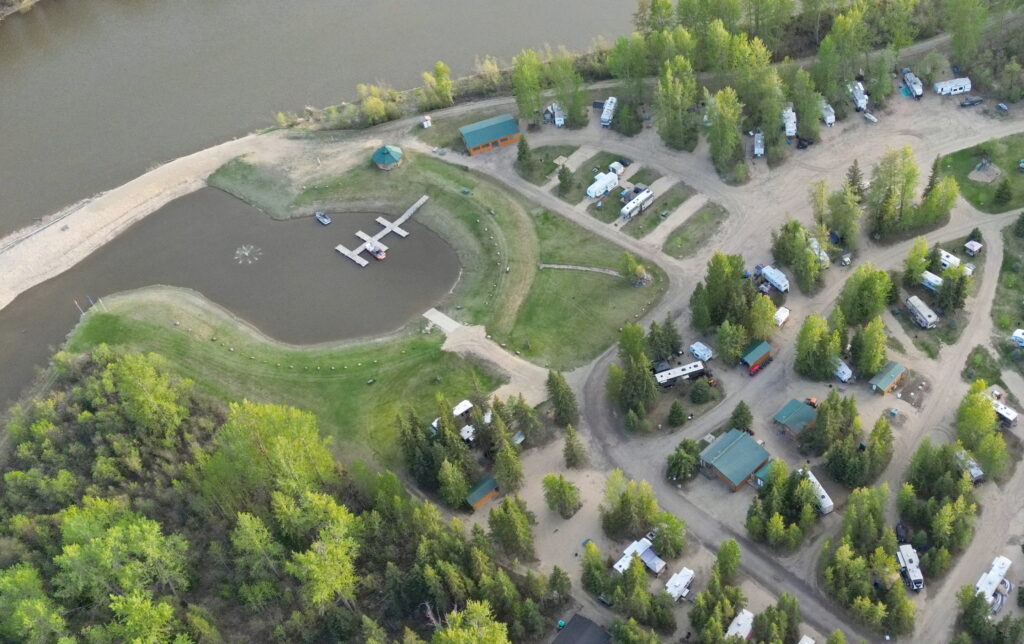
A Legacy to the North
Woodlands RV Park & Marina was never about a quick project. It was about building something that could last—something people would return to.
Today, it draws guests from across Alberta and beyond, many returning year after year. Generations have watched their kids grow up here. Someone once told they’d like to retire nearby just to stay close.
The legacy isn’t just mine. It belongs to everyone who has pulled into a site and felt the river’s pull.
Long after I’m gone, I hope Woodlands continues to be what it’s always meant to be: a place where people can reconnect—with nature, with each other, and with a simpler rhythm of life.
